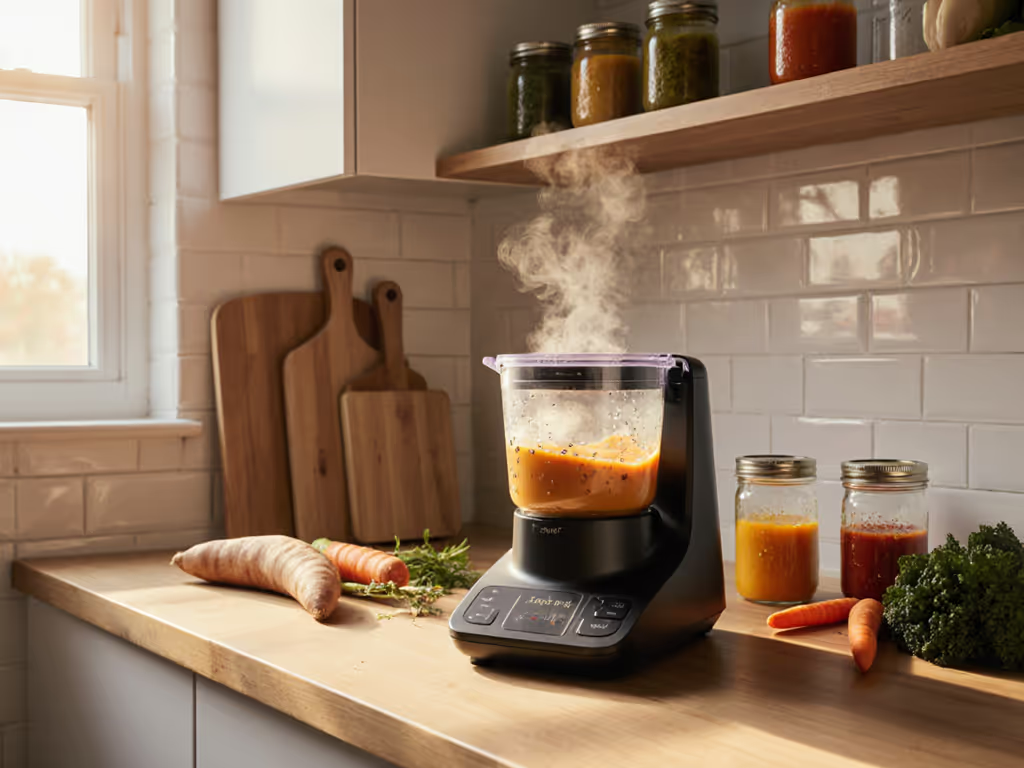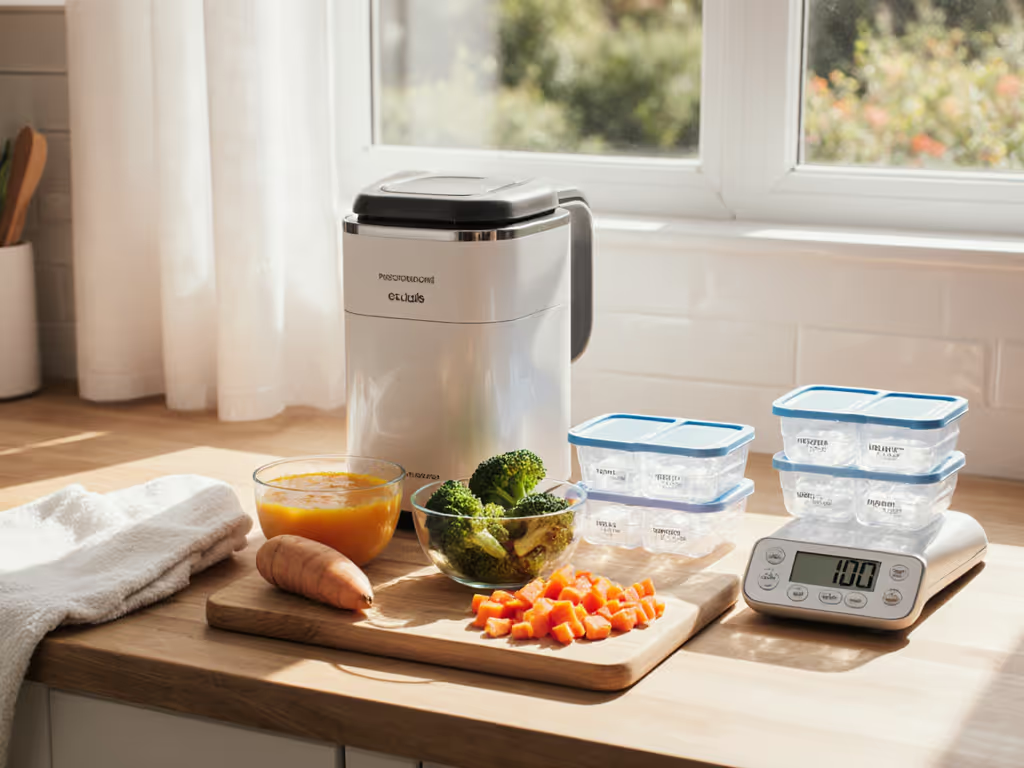
Complete Guide to Dual Baby Food Makers
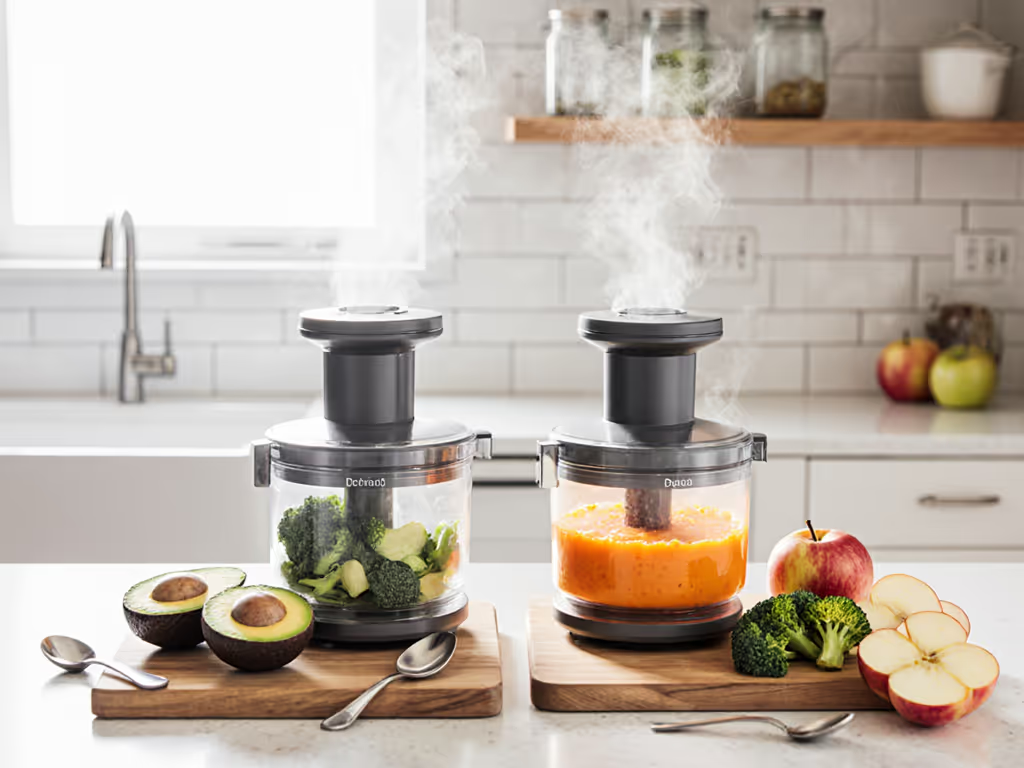
Did you know that over 70 percent of parents report struggling to find time for homemade baby food prep each week? Balancing healthy meals for a growing child with a packed schedule often feels overwhelming. Dual baby food makers are designed to help busy parents turn complicated, messy kitchen routines into a simple process, letting you prepare fresh, nutritious food with fewer steps and less cleanup.
Key Takeaways
| Point | Details |
|---|---|
| Time Efficiency | Dual baby food makers streamline meal preparation by allowing parents to simultaneously steam and blend food, saving significant time. |
| Reduced Clutter | These multi-functional appliances consolidate multiple tasks into one unit, decreasing kitchen space requirements and cleanup efforts. |
| Nutritional Benefits | Integrated steaming methods in dual models help preserve nutrients, ensuring healthier meals for infants and toddlers. |
| Varied Options | Availability of compact, mid-range, and professional models enables parents to choose appliances based on their specific needs and kitchen space. |
Dual Baby Food Makers Explained Clearly
Parents juggling multiple tasks know that baby food preparation can quickly become complicated. Enter the dual baby food maker - a game-changing kitchen appliance designed to streamline meal preparation for infants and toddlers. These innovative devices combine multiple functions into one compact unit, allowing you to steam, blend, and process baby food with remarkable efficiency.
At its core, a dual baby food maker typically offers two critical functions simultaneously: steaming and blending. Unlike traditional single-function appliances that require transferring food between different machines, these models allow you to cook and puree ingredients in the same device. Imagine steaming vegetables in one compartment while blending fruits in another - all without switching equipment or creating extra dishes to clean.
The primary advantages of dual baby food makers extend beyond convenience. These multi-functional tools provide several benefits for busy parents:
- Time-saving preparation process
- Reduced kitchen clutter with fewer appliances
- Consistent food texture control
- Nutrient preservation through integrated steaming
- Easy cleanup with fewer components
Whether you're preparing multiple meals or managing different food consistency needs, dual baby food makers offer unprecedented flexibility. By combining steaming and blending capabilities, these devices transform complex baby food preparation into a straightforward, efficient process that even sleep-deprived parents can manage with ease.
Key Features and Operating Mechanisms
Dual baby food makers are engineering marvels designed to simplify infant nutrition preparation. Steam and blend functions form the core operating mechanism, allowing parents to transform raw ingredients into perfectly textured meals with minimal effort. These appliances typically feature separate compartments that enable simultaneous cooking and pureeing, dramatically reducing food preparation time.
The sophisticated operating mechanisms of these devices include multiple precision controls that cater to different nutritional stages. Most models offer adjustable settings such as:
- Temperature controls for precise steaming
- Variable blending speed options
- Automatic shutoff for safety
- Timer functions with precise minute increments
- Capacity indicators to measure ingredient volumes
Safety remains paramount in these appliances. BPA-free materials and food-grade stainless steel components ensure no harmful chemicals leach into your baby's meals. Advanced models include additional protective features like thermal sensors that prevent overheating and automatic cycle completion, giving parents peace of mind during meal preparation.
The technological sophistication of dual baby food makers extends beyond basic functionality.
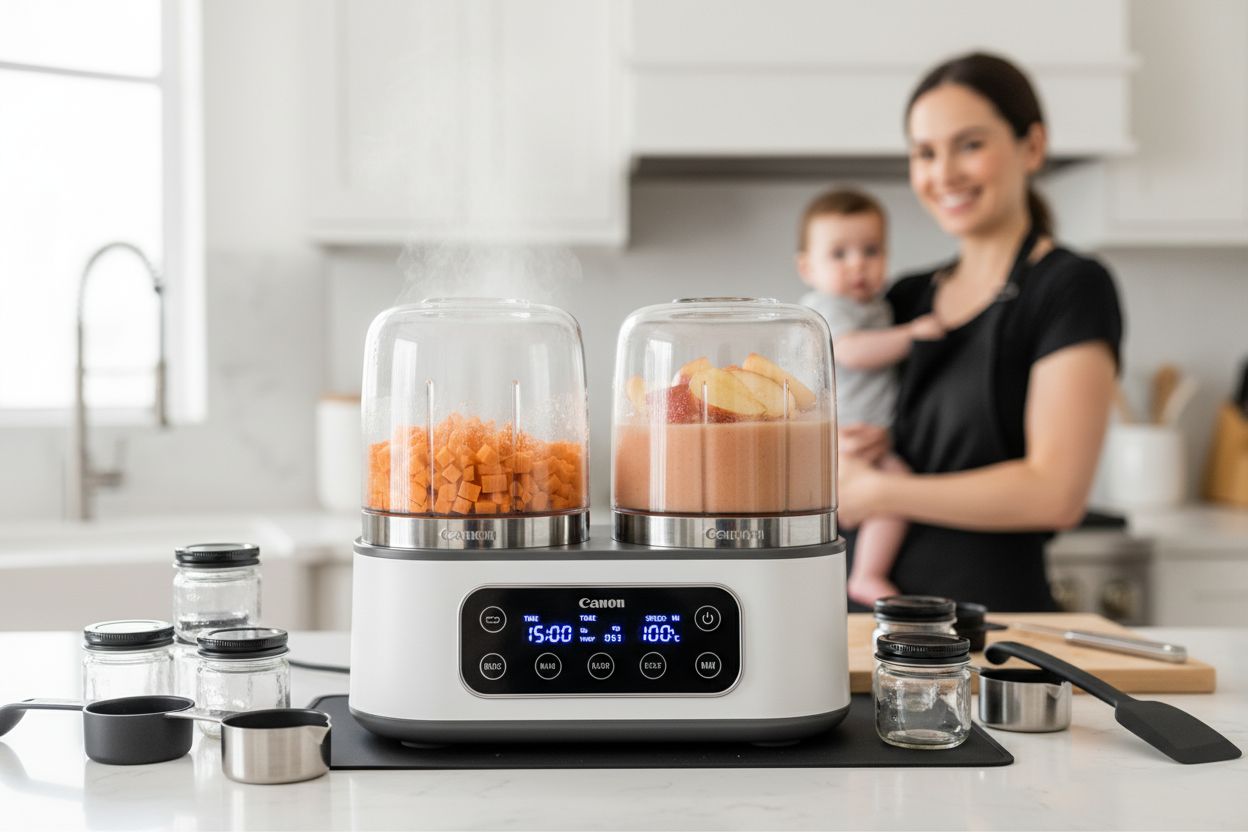 Intelligent design elements like one-touch operation, digital displays, and programmable cooking cycles transform what was once a complex kitchen task into a streamlined, user-friendly experience. Whether you're preparing pureed vegetables or chunky toddler meals, these multi-functional devices adapt to your specific nutritional needs with remarkable precision.
Intelligent design elements like one-touch operation, digital displays, and programmable cooking cycles transform what was once a complex kitchen task into a streamlined, user-friendly experience. Whether you're preparing pureed vegetables or chunky toddler meals, these multi-functional devices adapt to your specific nutritional needs with remarkable precision.
Types of Dual Baby Food Makers Compared
Dual baby food makers come in diverse configurations, catering to different parental needs and kitchen spaces. Compact models like the QOOC 4-in-1 mini maker are perfect for small kitchens or parents with limited counter space. These smaller units typically offer essential functions like steaming and blending but with a more streamlined design that doesn't compromise on functionality.
On the other end of the spectrum, professional-grade models such as the Babymoov Duo Meal Station represent the pinnacle of baby food preparation technology. These larger units boast impressive features:
- Expansive 9-cup total capacity
- Simultaneous cooking of multiple food types
- Advanced temperature and texture controls
- Multiple cooking modes (steam, blend, reheat, defrost)
- Separate compartments for different ingredients
Mid-range options strike a balance between compact design and advanced functionality. The Béaba Babycook Duo exemplifies this category, offering dual steaming and blending capabilities in a more moderately sized appliance. These models are particularly attractive to parents seeking comprehensive food preparation without overwhelming their kitchen setup.
Each type of dual baby food maker offers unique advantages. Compact models prioritize space efficiency and basic functionality, mid-range units provide balanced features, while professional-grade machines deliver maximum versatility. Your choice ultimately depends on your specific cooking needs, kitchen space, and budget - ensuring there's a perfect dual baby food maker for every family's unique requirements.
Here's a comparison of dual baby food maker types:
| Model Type | Key Features | Best For |
|---|---|---|
| Compact | Small size<br>Basic steam & blend<br>Affordable | Small kitchens<br>Minimal needs |
| Mid-Range | Dual steaming/blending<br>Moderate capacity<br>Balance of options | Balanced needs<br>Average spaces |
| Professional-Grade | Large capacity<br>Multiple functions<br>Advanced controls | Multiple children<br>Frequent use |
Benefits and Drawbacks for Parents
Dual baby food makers represent a significant leap in kitchen technology for parents, offering unprecedented convenience alongside some notable challenges. These multi-functional devices can transform meal preparation from a time-consuming task to a streamlined process that saves precious minutes during hectic parenting days. The ability to steam and blend ingredients in the same appliance means fewer dishes, reduced cleanup time, and more quality moments with your little one.
However, the advantages come with some considerations parents should carefully evaluate:
Pros of Dual Baby Food Makers:
- Simultaneous cooking and blending capabilities
- Significant time savings during meal preparation
- Reduced kitchen clutter with an all-in-one appliance
- Precise temperature and texture control
- Nutrient preservation through integrated steaming
Potential Drawbacks:
- Higher initial purchase cost compared to traditional methods
- Larger countertop footprint for some models
- Potential noise during blending and steaming cycles
- Learning curve for optimal usage
- Limited capacity for larger families
The financial investment in a dual baby food maker requires careful consideration. While the upfront cost might seem steep, the long-term benefits of consistent, healthy, homemade baby food can offset initial expenses. Parents must weigh the convenience against their specific lifestyle, kitchen space, and budgetary constraints. For many, the time saved and the ability to create fresh, nutritious meals makes these appliances an invaluable parenting tool - transforming meal preparation from a chore into an efficient, enjoyable experience.
Noise Levels, Materials, and Safety Standards
Safety standards in dual baby food makers have evolved significantly, with manufacturers prioritizing infant health through meticulous material selection and advanced engineering. Modern devices feature food-grade components designed to eliminate potential chemical contamination risks, focusing specifically on creating an environment that protects your baby's nutritional intake and overall well-being.
When examining materials, parents should prioritize key safety characteristics:
- BPA-free plastic components
- Stainless steel water reservoirs
- Food-grade silicone sealing elements
- Non-toxic manufacturing processes
- Dishwasher-safe removable parts
Noise levels represent another critical consideration for parents. While functionality remains paramount, motor sound can significantly impact kitchen environment and potential baby sleep disruption. Different models produce varying decibel levels, with some professional-grade units generating more substantial operational sounds compared to compact models. Manufacturers have increasingly focused on developing quieter mechanisms, understanding that parents value both performance and minimal acoustic disturbance.
Comprehensive safety standards extend beyond material selection. Advanced dual baby food makers now incorporate intelligent safety features like automatic shut-off mechanisms, thermal protection sensors, and precise temperature controls. These technological innovations ensure consistent food preparation while minimizing potential operational risks. Parents can feel confident knowing modern appliances undergo rigorous testing to meet stringent safety regulations, transforming complex meal preparation into a secure, reliable process that prioritizes infant nutrition and parental peace of mind.
Dual Models vs. Single Baby Food Makers
The landscape of baby food preparation has dramatically transformed with the introduction of dual baby food makers, challenging traditional single-function appliances. Where single models require parents to navigate multiple steps and devices, dual models offer an integrated solution that streamlines the entire food preparation process. Imagine transitioning from separate steaming pots and blending containers to a single, efficient machine that handles everything seamlessly.
Key differences between dual and single baby food makers become immediately apparent when comparing their capabilities:
Single Baby Food Maker Characteristics:
- Typically lower initial cost
- Smaller countertop footprint
- Limited functionality
- Manual transfer between cooking and blending stages
- Basic temperature control
Dual Baby Food Maker Advantages:
- Simultaneous steaming and blending
- More precise temperature management
- Larger ingredient capacity
- Multiple cooking modes
- Reduced kitchen equipment clutter
The investment in a dual baby food maker represents more than just a kitchen appliance purchase - it's a time-saving strategy for busy parents. Single models might seem more budget-friendly initially, but the convenience of dual models often justifies their higher price point. Parents gain significant efficiency: no more transferring hot foods between containers, reduced cleaning time, and the ability to prepare more complex, nutritionally balanced meals with minimal effort.
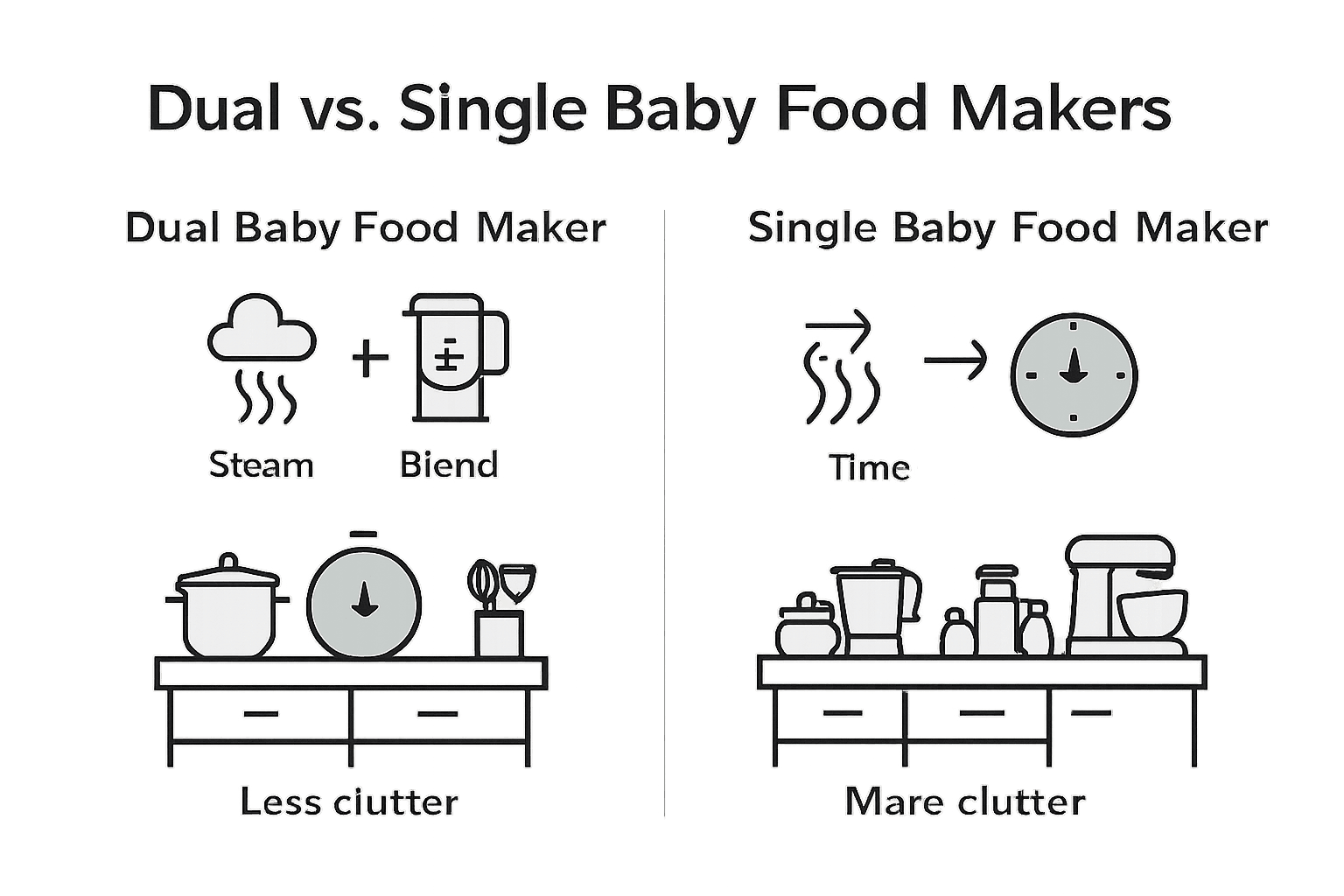
Ultimately, the choice between dual and single baby food makers depends on individual family needs. For parents with limited time, multiple children, or a desire for more sophisticated meal preparation, dual models offer an unparalleled combination of convenience and functionality. The extra upfront cost translates into substantial time savings and a more streamlined cooking experience.
Transform Baby Food Prep: Discover Quiet, Efficient Solutions Today
Are you tired of juggling messy cleanups, noisy machines, and clumsy equipment every mealtime? Choosing the right dual baby food maker can feel overwhelming—especially when you want something quiet, fast, and truly safe for your baby. Parents who want to reclaim precious time and reduce stress know the value of getting unbiased, expert advice before making an investment.
Stop guessing about safety, noise, or true user-friendliness. At Parent Kitchen Lab, you get access to comprehensive product reviews, head-to-head comparisons, and pediatrician-approved guides that pinpoint the best dual models for your exact needs. Whether you are looking for one-handed operation, hassle-free cleaning, or reassurance on non-toxic materials, our insights save you from expensive mistakes and daily frustration. Visit Parent Kitchen Lab now to explore top-rated baby food makers and start making healthier, simpler meal prep part of your daily routine. Your journey to confident and easy baby food prep starts here.
Frequently Asked Questions
What are the key benefits of using a dual baby food maker?
Using a dual baby food maker offers several benefits including time-saving meal preparation, reduced kitchen clutter with a single appliance, precise control over food texture, and nutrient preservation through integrated steaming. It also simplifies the cooking process by allowing parents to steam and blend food simultaneously.
How do dual baby food makers compare to single baby food makers?
Dual baby food makers combine both steaming and blending functions into one appliance, allowing for simultaneous cooking. Unlike single baby food makers, which require transferring food between devices, dual models streamline the entire preparation process, saving time and reducing cleanup.
Are dual baby food makers safe for my baby’s food?
Yes, modern dual baby food makers are designed with safety in mind. They typically use BPA-free plastics, food-grade stainless steel, and have features like automatic shutoff and thermal protection sensors to ensure safe food preparation without chemical contamination.
What should I consider when choosing a dual baby food maker?
When choosing a dual baby food maker, consider factors such as the appliance’s capacity, size, and available features like temperature control and blending speeds. Additionally, evaluate your kitchen space, cooking frequency, and whether you have multiple children that may require more versatility.
Related Articles

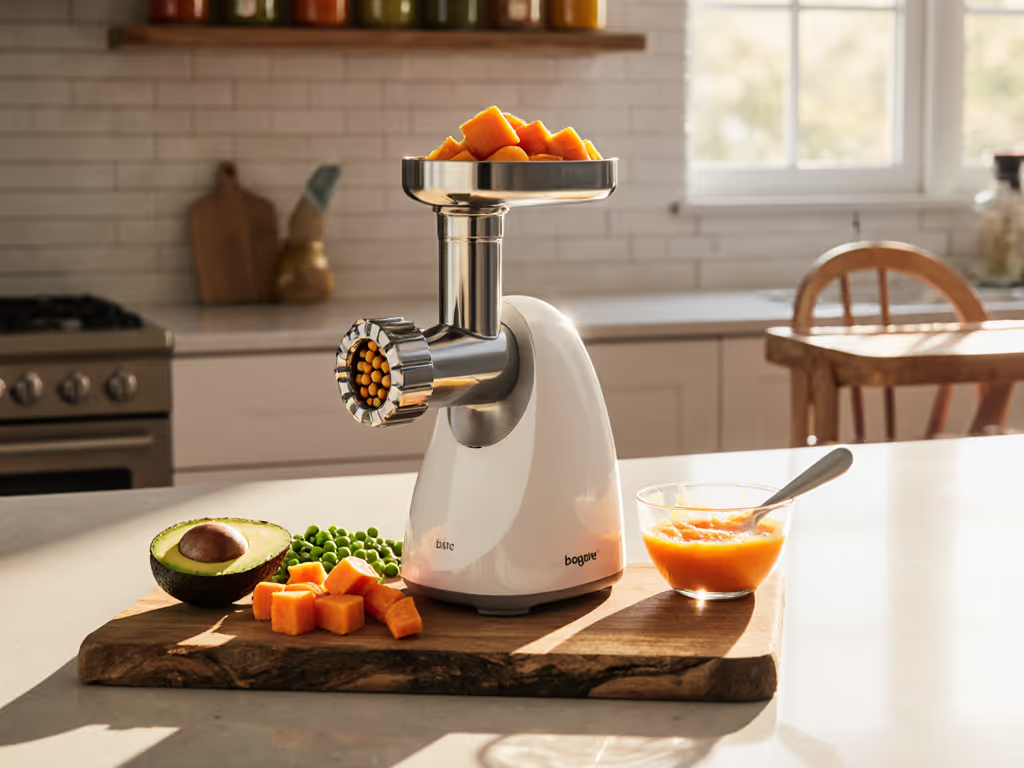
Baby Food Mill Explained: Features, Types, and Benefits
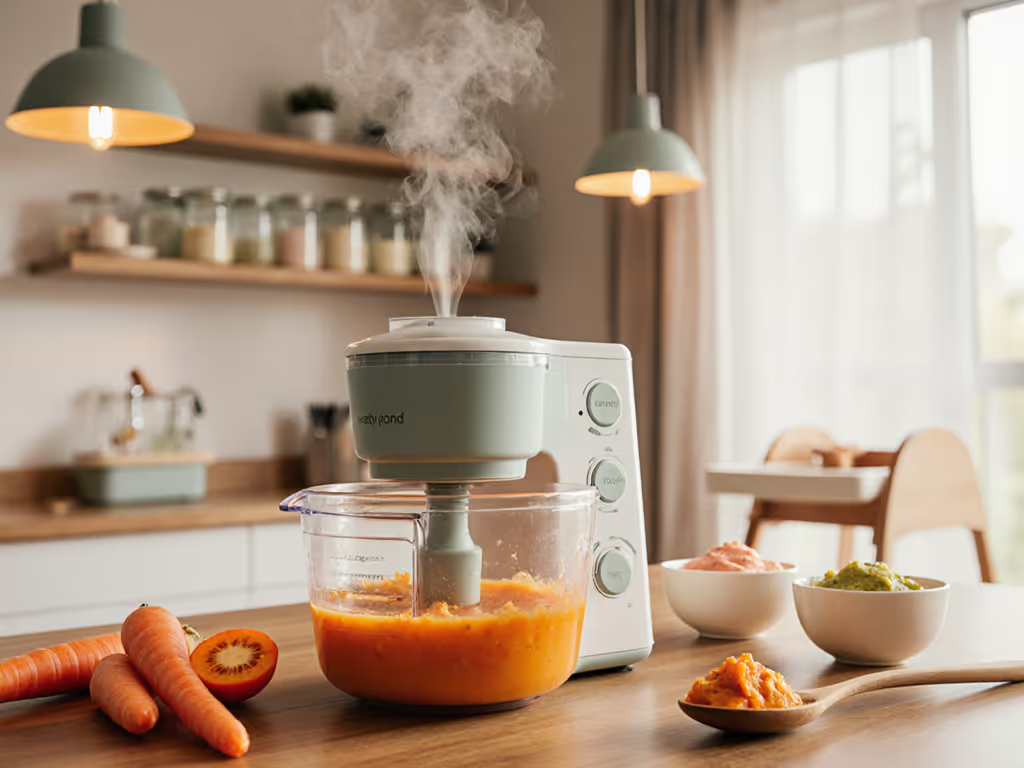
7 Must-Have Features in a Baby Food Maker for Parents
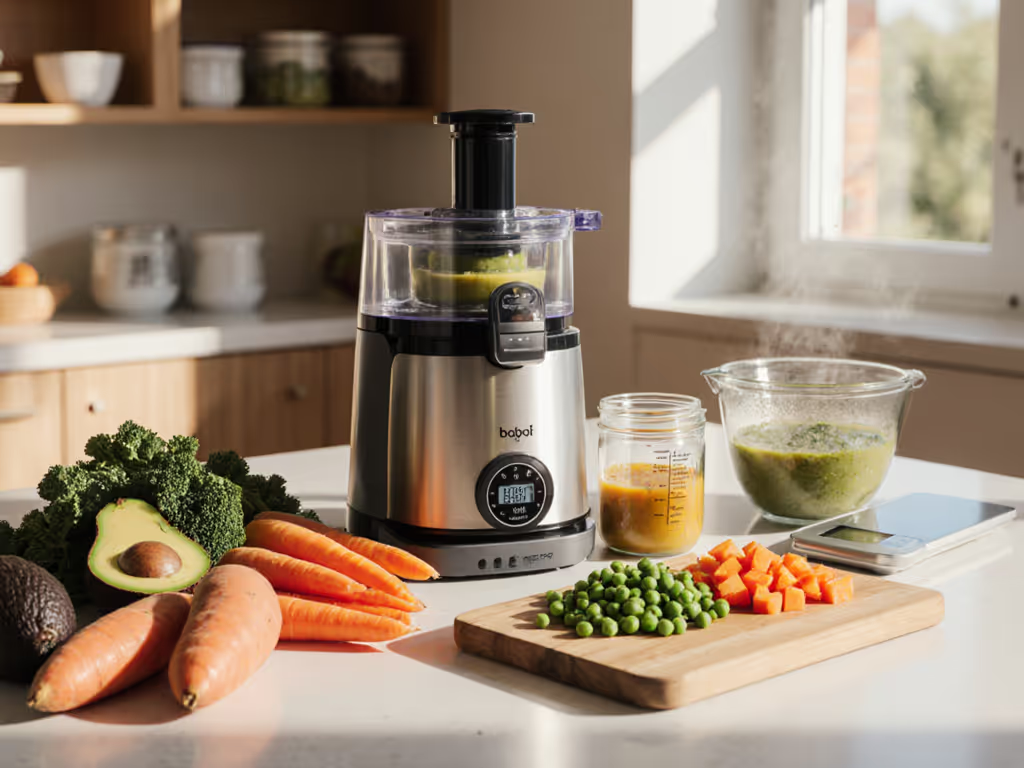
Master the Baby Food Preparation Process at Home
